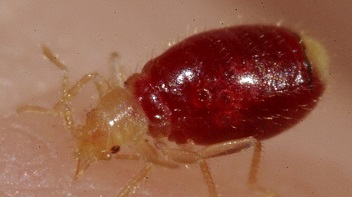 FAIRFAX, VA.—With beaches and tourist attractions beginning to reopen as stay-at-home orders are lifted across the country, commercial lodging facilities must prepare for the influx of eager travelers ready to get the summer travel season underway. While resuming regular operations is an exciting prospect for any business owner, those in charge of lodging facilities must still be on high alert for one of the most elusive pests—bed bugs. The National Pest Management Association (NPMA) is urging facility managers to take the steps necessary to prevent an infestation.
FAIRFAX, VA.—With beaches and tourist attractions beginning to reopen as stay-at-home orders are lifted across the country, commercial lodging facilities must prepare for the influx of eager travelers ready to get the summer travel season underway. While resuming regular operations is an exciting prospect for any business owner, those in charge of lodging facilities must still be on high alert for one of the most elusive pests—bed bugs. The National Pest Management Association (NPMA) is urging facility managers to take the steps necessary to prevent an infestation.
“A vast majority of hotels have been sitting vacant these last few months, and while many might think bed bugs would disappear as a result, that couldn’t be farther from the truth,” said Brittany Campbell, Ph.D., staff entomologist for the NPMA. “Bed bugs can survive for months without a blood meal, so not only are they still alive, but they’re hungrier than ever and have been known to even feed during the day if they’re desperate enough, making inspection and prevention efforts critical to a successful reopening.”
Underscoring just how prevalent bed bugs currently are, from April 2019 to April 2020 there was a 70 percent increase in online conversations in the United States around the topic of encountering bed bugs, with more than 6.1 million conversations occurring this past April alone.* To help prevent an infestation, the NPMA is sharing the following steps facility managers should take to detect bed bugs early and prevent their spread:
- Schedule regular bed bug inspections of all rooms and public areas by a pest management professional.
- Housekeeping staff should inspect for evidence of bed bugs during every room service and maintenance staff should remove and check behind headboards and under box springs periodically.
- Follow proper laundry handling practices to reduce the risk of spreading bed bugs, including keeping clean and dirty laundry separate and ensuring all carts remain in the hallway during room service.
- Eliminate hiding places such as peeling wallpaper and paint, cracks and holes in walls and floors, crevices around headboards and along baseboards and molding, as well as around heating and A/C units.
- Vacuum rooms thoroughly, including items that are often overlooked such as drapes, behind pictures and underneath furniture.
- Consider ways to make bed bugs easier to detect when redesigning guestrooms, such as white bedding, fewer fabrics and less clutter.
- Avoid used or reconditioned furniture and furnishings, including antiques, when designing the room. If you do bring second-hand furniture into your building, be sure to have all items inspected and disinfested before installation.
- If bed bugs are found, take proper precautions when removing furniture from the room such as wrapping the mattress, box spring and furniture in plastic and sealing them to avoid dropping bed bugs or their eggs while transporting items out of the building.
For more information on bed bugs and how to prevent an infestation, visit PestWorld.org.
*Online engagement findings are a result of research conducted by Advanced Symbolics Inc.





